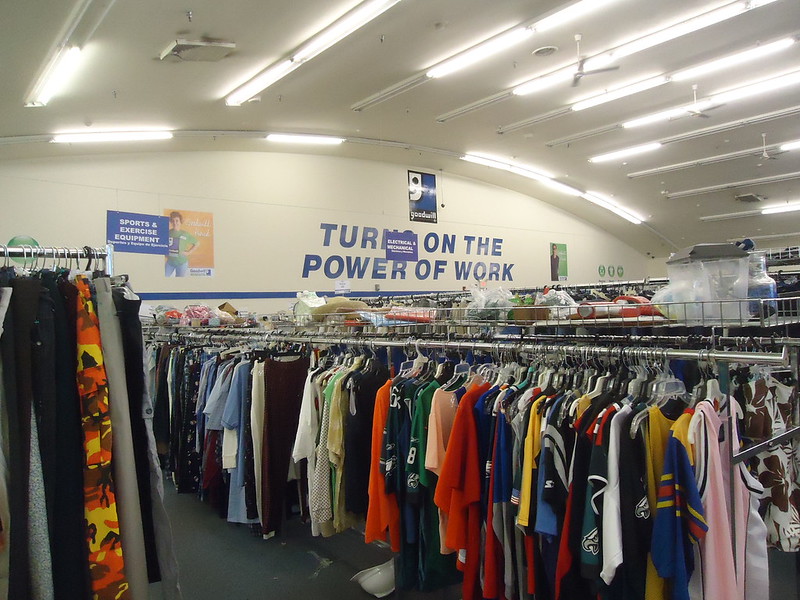Thrift Stores: More Than A Macklemore Song
The interior of a Goodwill thrift store on the White Horse Pike in Stratford, New Jersey. https://www.flickr.com/photos/nintendo85/18721112039.
October 21, 2019
When I was younger, my mom used to take me thrifting.
I thrifted before it was mainstream. You could see me, albeit slightly ashamed, in all my glory as a validation seeking sixth grader in a Goodwill. I slinked along the aisles just praying nobody from my middle school saw me. I didn’t want to be caught dead thrifting. My mom merely laughed at my childish ignorance and told me that later I’d realize what a gift it is.
Looking back now, I couldn’t agree with her more. Circa 2013, thrifting carried a stigma. It wasn’t cool to wear second-hand clothing (which was what most of my wardrobe consisted of at the time). Back then, ‘popular’ girls got to decide what was in and what was out. Apparently, unless all your clothes sported a fancy Aeropostale or Hollister logo, it was the latter. To be frank, I was embarrassed to thrift.
However, the tables have turned.
Thrifting has become topical in the world of social media and teenagers. Maleeha Ansari, a senior at Solon High School (SHS) who loves thrifting, believes that influencers have started normalizing second-hand clothing because of the innumerous benefits thrifting has.
“Social media definitely has a huge influence because once you see more famous people who you look up to thrifting, then you start doing it and people just realize that it’s a good idea,” Ansari said. “Especially because we are in high school, and we don’t have a lot of money to spend on clothes. It’s more economically convenient.”
Many other students from SHS have gained a passion for thrifting, including senior Urvee Deo. Deo has been thrifting for about seven months, but she already believes that conventional shopping is very different compared to thrifting.
“With conventional shopping, factories produce a thousand of the same shirt or pants, but thrifting is unique in a sense because the pieces aren’t on sale anymore,” Deo said.
Along with the sustainability and uniqueness of thrifting comes the revolving door of fashion. This essentially means that thrifting causes clothing styles from the 90’s, 80’s and even 70’s to make a comeback.
“The clothes that you find in thrift stores are usually older so they don’t really reflect the modern idea of what people are wearing right now,” Ansari said. “I definitely started liking older styles more because of thrift stores.”
Additionally, SHS sophomore Julia Nail loves trying new fashion trends. She uses 90’s fashion as not only a form of creative expression, but also to improve her confidence.
“You can tell a lot about a person’s personality by the way they dress,” Nail said. “Whenever I have a good outfit on, I always feel better.”
For many people thrifting can be a challenge, but it can be a rewarding one. Ansari feels thrifting can be compared to an adventure, which makes it so much more fun than regular shopping.
“[Thrifting] is more interesting because you really have to look for stuff in a thrift store, whereas in a regular store everything is right in front of you,” she said. “You know that when you go to school or when you go out, nobody else will be wearing the same things as you because your clothes are unique.”
Nail started to thrift at a young age, but after a hiatus, she decided to start thrifting again in seventh grade and hasn’t stopped since. Being a ‘veteran’ to thrifting, Nail describes how it feels when she finds the perfect piece.
“It’s almost like euphoria,” she said. “Especially if you are there with something in mind.”
Thrifting can be overwhelming at first, but Deo has advice for newbies who are considering visiting their nearest GoodWill.
“I would say, go with friends or someone who has been thrifting already. Just be with people,” Deo said.“Also, thrifting is a lot of hit or miss, so don’t get disappointed if you don’t find something that you like the first time.”

